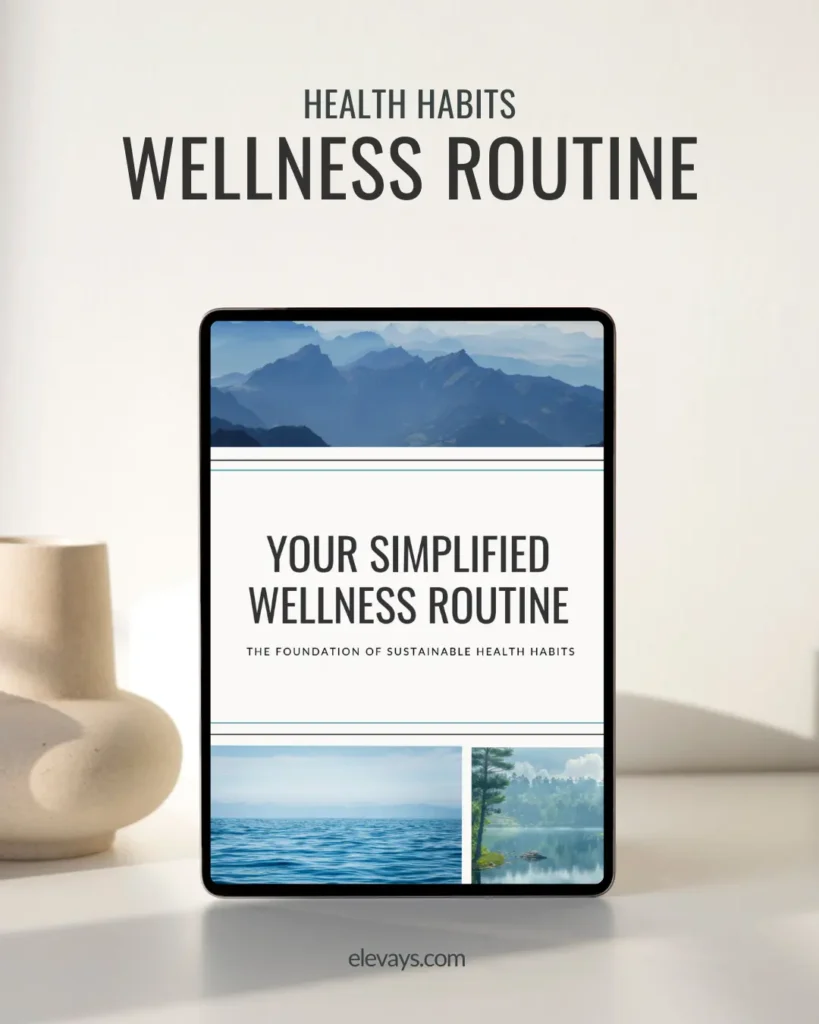There is so much more power of breath than just the fact it keeps us alive. I know, sounds impossible, right? But it’s true. The way you breathe can either greatly benefit you or greatly wreck you. If you’re stressed and can’t seem to get a handle on overwhelm, this type of breathing is going to help you. In this article, I’m diving into how deep breathing reduces stress and helps build a more resilient you. By the end of this read, you’ll understand the best way to breathe, how to relieve anxiety naturally, and more. Ready to take control of your mind and body? Let’s get started.
How Breath Impacts Stress
During the day, you may find yourself shallow breathing or not breathing at all. I used to be a chronic breath holder and never even realized it. Shallow breathing and irregular breathing are signs that you are stressed or anxious. When you take in less oxygen, brain function suffers, impacting mood, thinking, energy, memory, learning, digestion, and organ function.
Stress not only affects breathing, but breathing also impacts stress levels. When you are stressed, your nervous system goes into fight or flight mode and can be stuck in that sympathetic state for a long (if not consistent) period of time. If you want to learn how to control the cortisol hormone (aka your stress hormone) and how to reduce oxidative stress naturally, it’s essential to learn how to control your breath.
TRUTH BOMB:
You’re
Already killing it!
If You Were More Consistent With Your Wellness Routine, You’d Be Unstoppable.
The Best Way to Breathe
Did you know that humans are the only mammals that have crooked teeth?! Yup. According to James Nestor, author of Breath, it has everything to do with the way we breathe. We are modern mouthbreathers, and it’s not a good thing. Our skulls, airways, and mouths have completely changed throughout history because of breathing through the mouth!
Breathing through the nose, in and out, for 5 seconds is the best way to breathe. A lot of research supports this, and even more that shows that focusing on longer exhales when you have the opportunity can flip you from sympathetic to parasympathetic.
Breathing for 5 seconds in, 5 seconds out will look like taking six complete breaths. Try this for three minutes and see how you feel, or one minute for 3x a day.
How Deep Breathing Reduces Stress
As we’ve learned, breath isn’t just part of your body’s stress response. You can also induce a state of anxiety or panic just by taking shallow, short breaths. Purposeful deep breathing can physically calm the body down, signaling the mind that everything is all good.
I mean, it makes sense. Stress in its purest form is a physical response in the body. And once the body is calm, the mind follows.
Learning to be conscious of breathing patterns can help you control stress in your day-to-day life. It’s one of the simplest and most effective ways to relieve anxiety naturally.
Other benefits of purposeful breath and deep breathing:
- Strengthens lungs
- Reduces muscle tension
- Cope with chronic pain
- Help with weight loss
- Reduce or prevent motion sickness
- Promote healthy digestion
- Helps with migraines
- Boost blood circulation
- Prime you for a deep sleep
How to Deep Breathe and Other Breathing Practices
As we mentioned, one of the best deep breathing techniques for handling chronic stress is taking six breaths per minute, inhaling for a count of 5 seconds, and exhaling for a count of 5 seconds. You can try this 3x a day for one minute or in the morning for 3 minutes to get started. This is a type of ratio breathing, one of my favorite deep breathing exercises.
1- Ratio Breathing
Another type of ratio breathing is having a longer exhale than inhale, which is highly beneficial for stress and promoting calmness. It can also help to relieve anxiety. Try one of the below combinations for 5 minutes. It will be a game changer.
- 5:5
- 5:7
- 4:5
- 4:6
- 4:8
2- Left Nostril Breathing
Another breathing technique that is great for reducing stress is left-nostril breathing. The left nostril is associated with the parasympathetic system, and the right is associated with the sympathetic system. According to Nestor, a lot of people sometimes have a hard time breathing just out of their left nostril and find that it’s clogged. That’s a sure sign that you are chronically stressed.
To do left nostril breathing, plug your right nostril with your finger and breath deeply (your preferred form of ratio breathing) out of just your left nostril. Try this for one minute. It’s a great way to relieve anxiety and stress.
I hope this article has helped you understand a practical way to relieve stress naturally. I talk more about the power of breathing in my Home Birth Story Part 1 and Part 2—how deep breaths helped me give natural birth to all four of my children.
Let me know in the comments your experience with breathwork.





READ the Latest
Health Habits
Health Habits
Longevity
Longevity